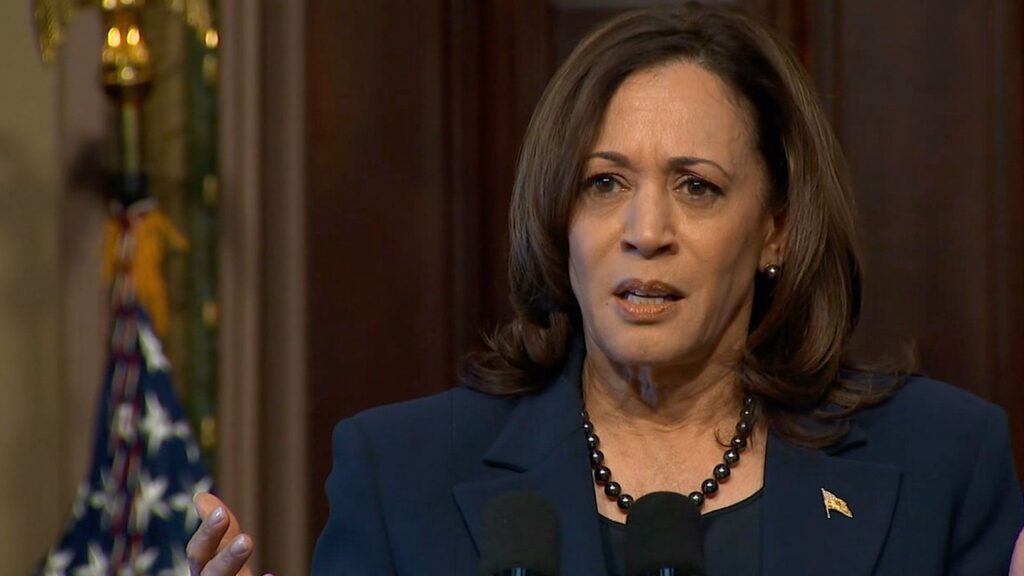
As housing affordability becomes a pressing issue, Vice President Kamala Harris has proposed several initiatives aimed at making homeownership more accessible. While these ideas may sound appealing, there are growing concerns that the government could be setting the stage for another banking crisis, similar to the one that nearly collapsed the economy in 2008. Could relaxing lending standards and overextending banks in pursuit of a political goal lead us down the same dangerous path?
Homeownership: A Source of Pride and Community Investment
For most Americans, owning a home is not just about having a place to live—it represents financial security, personal achievement, and an investment in the community. Homeownership fosters stronger ties to local areas, encouraging people to contribute to the stability and well-being of their neighborhoods. While expanding access to homeownership is a worthy goal, it must be pursued responsibly, without undermining the financial safeguards that protect both homeowners and the broader economy.
The Risks of Relaxing Lending Standards
Vice President Harris has proposed measures to loosen qualification standards in order to help more people enter the housing market. While this may increase short-term homeownership rates, it risks creating a bubble similar to the one that led to the 2008 financial crisis. The crisis was fueled by subprime mortgages—loans given to people who couldn’t afford them. When these borrowers defaulted en masse, it led to widespread foreclosures and caused significant damage to the banking sector and the global economy .
Today, inflation is driving up the cost of materials and everyday goods, while interest rates are rising. Under these conditions, lowering lending standards could once again encourage banks to take on riskier borrowers, potentially leading to a new wave of defaults that could ripple through the financial system.
HUD, FHA, and VA Programs: Already Helping Buyers
The U.S. government already provides a number of housing assistance programs through HUD, FHA, and VA, offering low down payment options and loan guarantees for first-time and low-income buyers. While these programs are valuable, they are not designed to push people into homeownership who cannot sustain it long-term. They are targeted to those who meet specific qualification criteria to ensure financial readiness.
Harris’ proposed $25,000 down payment assistance for first-time homebuyers may seem like an appealing idea on the surface, but similar programs already exist. Instead of expanding these programs further and risking the overextension of both borrowers and lenders, more focus should be placed on ensuring that those who do qualify for homeownership can sustain it without defaulting.
Rent Control and International Investment: Ineffective Solutions?
One of Harris’ housing proposals involves rent control to make housing more affordable for renters. However, rent control has a poor track record in cities like New York, where it often disincentivizes new development and worsens housing shortages . Developers are less likely to invest in new projects when faced with capped rental incomes, which exacerbates the very problem rent control aims to solve. Implementing this on a national scale could lead to even more severe housing shortages across the country.
Furthermore, Harris has proposed penalizing firms that hoard housing stock and drive up prices. While limiting property speculation could help in certain markets, there is also a risk that over-regulation could reduce competition and investment in the housing market, stifling growth.
Local Control vs. Federal Programs
Another issue with sweeping federal housing policies is their “one-size-fits-all” approach. The housing market in California is vastly different from the market in Kentucky. Federal programs, while well-intentioned, often fail to adapt to the unique economic circumstances of different regions. Housing costs, supply, and demand vary widely across states, and local governments are in a better position to tailor their policies to the needs of their communities.
State and local governments can address housing issues with more precision, ensuring that policies are effective in their respective markets. While federal oversight has a role to play, it cannot replace the flexibility and adaptability that local governance provides.
Immigration and Its Impact on the Housing Market
One factor often overlooked in the housing debate is the impact of immigration on housing demand. Estimates suggest that millions of immigrants have entered the U.S. in recent years, adding significant pressure to an already strained housing market . If the government continues to subsidize housing for new immigrants, it could further exacerbate the housing shortage, driving up prices for all renters and homeowners.
Limiting immigration and ensuring that housing assistance programs prioritize citizens may help alleviate this pressure. A balanced approach that considers both the housing market and immigration policy is essential to stabilizing home prices.
 Learning from the 2008 Crisis: Caution Is Essential
Learning from the 2008 Crisis: Caution Is Essential
The lessons of the 2008 financial crisis should not be forgotten. Overextending banks and lenders through relaxed qualification standards is a risky gamble, and we’ve already seen what can happen when financial institutions take on more risk than they can handle. The last thing the housing market—and the economy—needs is another collapse driven by irresponsible lending.
Expanding access to homeownership is a worthwhile goal, but it cannot be achieved through reckless financial policies. Homeownership represents pride and investment in the community, but it must be grounded in financial responsibility to ensure long-term stability for both homeowners and lenders.
Conclusion:
While the goal of making homeownership more attainable is admirable, it must be approached cautiously. Relaxing lending standards could lead to a banking crisis similar to 2008, jeopardizing the housing market and the broader economy. A balanced approach that emphasizes responsible lending, local control, and immigration reform offers a more sustainable path forward.
References:
- Financial Crisis of 2008: Overview and Causes – Investopedia
- The Failure of Rent Control: New York City as a Case Study – City Journal
- Immigration’s Impact on U.S. Housing – National Review




 The key elements of the Harris-Walz tax plan are designed around restoring and expanding two major tax credits: the Child Tax Credit (CTC) and the Earned Income Tax Credit (EITC). Additionally, they aim to raise taxes on high earners and corporations by rolling back Trump-era tax cuts and increasing capital gains taxes for wealthier Americans. Specifically, the Harris-Walz plan proposes to:
The key elements of the Harris-Walz tax plan are designed around restoring and expanding two major tax credits: the Child Tax Credit (CTC) and the Earned Income Tax Credit (EITC). Additionally, they aim to raise taxes on high earners and corporations by rolling back Trump-era tax cuts and increasing capital gains taxes for wealthier Americans. Specifically, the Harris-Walz plan proposes to:





